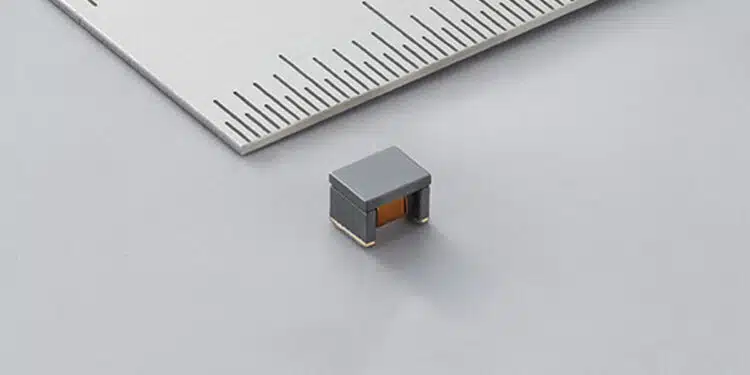Murata Manufacturing Co., Ltd. has commercialized the in-vehicle high current PoC automotive inductor LQW32FT_8H series.
Mass production began in September 2024.
With Advanced Driver Assistance Systems (ADAS) becoming more commonplace in recent years, the numbers of high-definition cameras on vehicles are also increasing. High-speed interface PoC*2 that combine both signal and power transmissions on a single coaxial cable are being used on vehicle camera systems with LVDS*1 transmission.
In a PoC circuit, a circuit processor handles broadband signals, and usually multiple inductors are used for a wider bandwidth to maintain the high impedance required to separate the signal and the power. In response, Murata applied our proprietary ceramic materials and wire wound structures to develop this product, which is capable of maintaining a high impedance.
This product makes it possible to reduce the number of inductors needed in a circuit. This product also has a rated current approximately 1.5 times higher than our previous products, allowing PoC inductors to be made more compact and reducing the amount of space required to mount the inductor. These characteristics make this product useful for reducing component size and weight.
Going forward, Murata will strive to develop products to meet market needs and contribute to the shift to high-performance and high-functionality automobiles.
| Product name | LQW32FT_8H series |
|---|---|
| Size | 1210 inch size (3.2 x 2.5 x 2.3mm) |
| Inductance range | 1.6 to 10μH |
| Operating temperature range | -55 to 125℃ |
| Other | AEC-Q200*3 compliant |
- *1LVDS (Low Voltage Differential Signal): The most general technical standard for the transmission of differential data.
- *2PoC (Power Over Coax): A method that combines the signal line and power line to a single coaxial cable.
- *3AEC-Q200: One of the standards defined by the AEC (Automotive Electronics Council).































